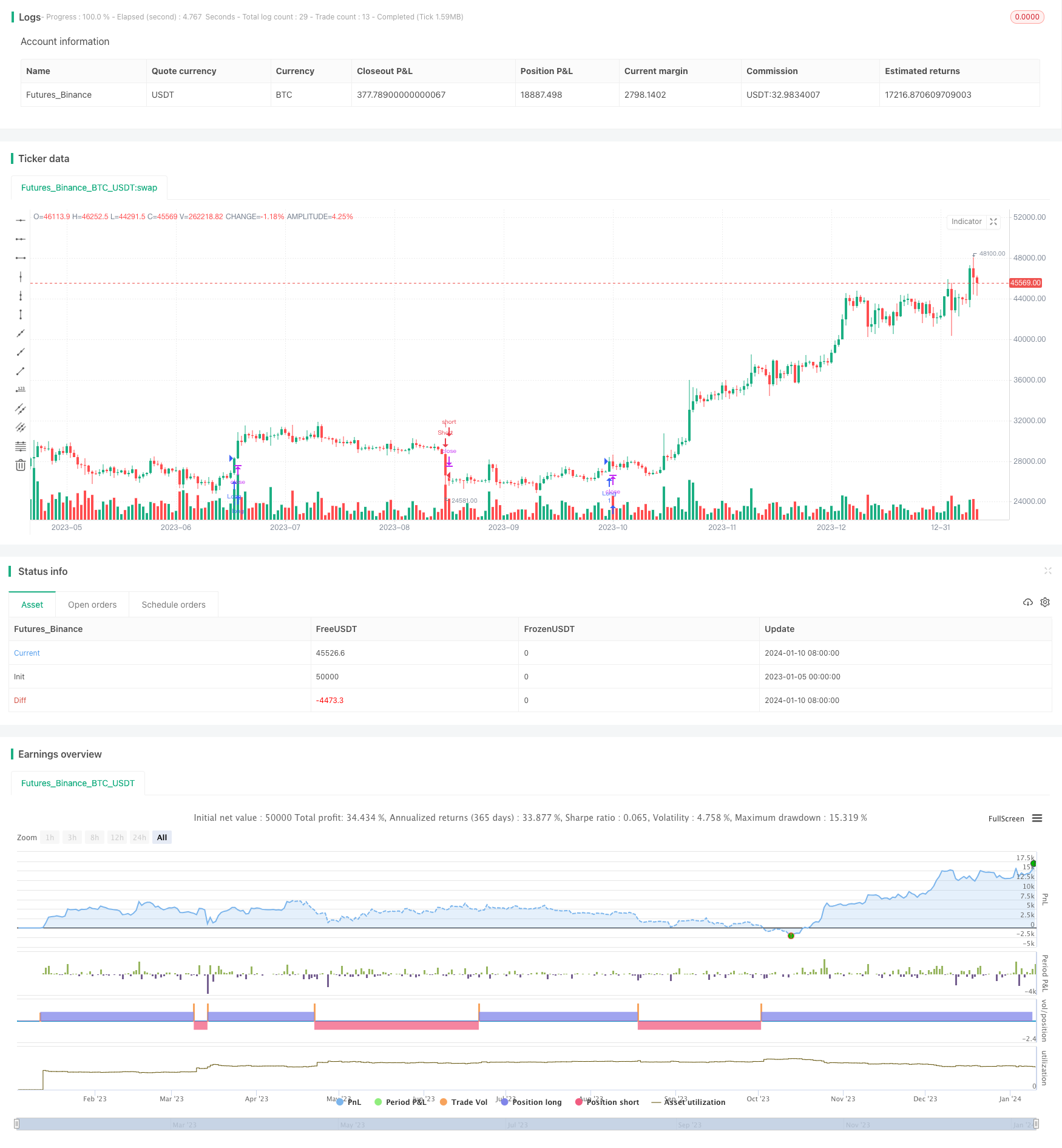
概述
本策略是一个应用于E-mini S&P500期货(ES)的尾随停止策略。它使用10日ATR作为参考,以3倍ATR作为止损范围来设置多头和空头的止损线。策略通过ATR线的方向变化来判断趋势,并在趋势转折点generate入场信号。一旦入场后,它会实时调整止损线,让止损线尾随价格运行,实现盈利的保护。
策略原理
本策略使用hl2作为价格源。首先计算10日ATR,并让用户选择是使用SMA方式计算ATR还是内置的ATR函数。计算出ATR后,向上向下各添加3倍ATR作为范围。这两个范围线就是止损线。
判断趋势的方法是,当价格超过上边界,则为多头;当价格跌破下边界,则为空头。当价格重新回调进入范围时,则确认趋势转折。这时如果由空转多,generate多头入场信号;如果由多转空,generate空头入场信号。
入场后,多头止损线设置为上边界下移1点,空头止损线设置为下边界上移1点,进行盈利的尾随保护。
策略优势
- 使用ATR能够自动适应市场波动率的变化,降低止损被触发的概率
- 追踪趋势的方法简单有效,避免追顶和追底的风险
- 尾随止损保证了盈利的保护,避免获利后再次亏损
风险分析
- ATR参数设定不当可能导致止损范围过大或过小
- 标的波动性陡变时,可能出现异常止损
- TAILING止损可能过于保守,未能持续追踪趋势
优化方向
- 可以考虑结合波动率指标对ATR参数进行优化
- 可以测试不同的TAILING止损算法,如余额百分比止损等
- 可以结合趋势指标过滤入场信号,避免非主趋势入场
总结
本策略整体来说是一种较为普适的趋势跟踪策略。它解决了止损范围确定难的问题,通过ATR动态调整降低了风险。同时尾随止损进行盈利保护。但ATR参数、止损算法等仍有优化空间。通过进一步测试和调整参数,本策略可以成为鲁棒性较高的跟踪止损策略。
策略源码
/*backtest
start: 2023-01-05 00:00:00
end: 2024-01-11 00:00:00
period: 1d
basePeriod: 1h
exchanges: [{"eid":"Futures_Binance","currency":"BTC_USDT"}]
*/
//@version=4
strategy("ATR Based Trailing Stop Strategy on ES! [v4]", overlay=true)
// Given ATR study
Periods = input(title="ATR Period", type=input.integer, defval=10)
src = input(hl2, title="Source")
Multiplier = input(title="ATR Multiplier", type=input.float, step=0.1, defval=3.0)
changeATR = input(title="Change ATR Calculation Method ?", type=input.bool, defval=true)
atr2 = sma(tr, Periods)
atr = changeATR ? atr(Periods) : atr2
up = src - (Multiplier * atr)
up1 = nz(up[1], up)
up := close[1] > up1 ? max(up, up1) : up
dn = src + (Multiplier * atr)
dn1 = nz(dn[1], dn)
dn := close[1] < dn1 ? min(dn, dn1) : dn
trend = 1
trend := nz(trend[1], trend)
trend := trend == -1 and close > dn1 ? 1 : trend == 1 and close < up1 ? -1 : trend
// Entry logic based on trend change
longCondition = trend == 1 and trend[1] == -1
shortCondition = trend == -1 and trend[1] == 1
if (longCondition)
strategy.entry("Long", strategy.long)
if (shortCondition)
strategy.entry("Short", strategy.short)
// Trailing stop loss logic
// For long positions, trail 1 point below the up plot
longStopPrice = up - 1
// For short positions, trail 1 point above the dn plot
shortStopPrice = dn + 1
strategy.exit("Trailing Stop Long", "Long", trail_offset=longStopPrice)
strategy.exit("Trailing Stop Short", "Short", trail_offset=shortStopPrice)